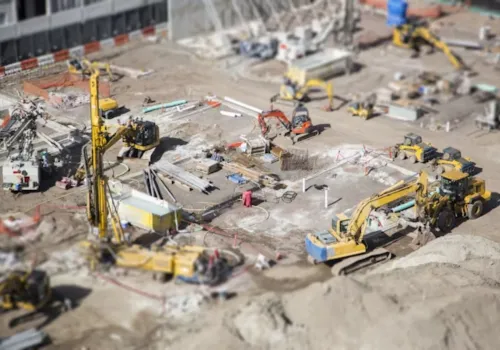
Construction activity slowed in January 2025, with total construction starts falling 6% to a seasonally adjusted annual rate of $1.1 trillion, according to the latest Dodge Construction Network report. The decline was primarily driven by a sharp pullback in commercial projects, even as infrastructure work—such as highway, bridge, and energy developments—helped cushion the downturn.
Nonresidential building starts, including office, hotel, and healthcare facilities, plunged 18%, while residential starts dipped just 1%. However, nonbuilding construction, which includes infrastructure projects, saw a 4% increase, offering some stability in an otherwise slow start to the year.
“After robust data center starts in November and December, total office starts fell back in January to more historically typical levels and drove a sizable piece of the month-to-month decline,” said Sarah Martin, associate director of forecasting at Dodge Construction Network.
“However, most nonresidential sectors saw weakness over the month.”
Despite continued demand for infrastructure development, labor shortages, high material costs, and uncertainty around tariffs and immigration policies are weighing on the construction sector, Martin added.

“Projects are likely to move through the planning queue slowly, at least until the Federal Reserve resumes expected cutting of rates in the back half of the year,” she said.
Despite the overall slowdown, several major projects broke ground in January, contributing to long-term construction momentum. These include:
The biggest contributor to January’s nonbuilding sector gains was highway and bridge construction, which increased 14% month-over-month. Utility and gas projects saw a small 1% increase, though environmental public works projects declined 14%.
On a year-over-year basis, nonbuilding construction jumped 17%, fueled by:
The residential sector also showed mixed trends in January:
The overall construction outlook remains uncertain, with commercial projects facing strong headwinds while infrastructure and residential construction continue to show resilience. As the industry watches interest rate policies, labor trends, and material costs, project developers may take a cautious approach in the coming months.
Originally reported by Sebastian Obando in Construction Dive.